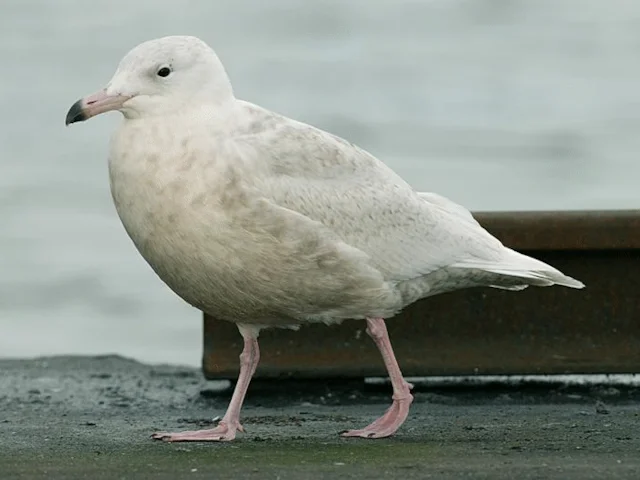 Two distinct lineages have been discovered between three Holarctic North American and Eurasian gull species, by the same team that revealed that the Herring Gull Larus argentatus was not a 'ring species'.
Two distinct lineages have been discovered between three Holarctic North American and Eurasian gull species, by the same team that revealed that the Herring Gull Larus argentatus was not a 'ring species'.
Using both sequencing two mitochondrial genes using AFLP (Amplified Fragment Length Polymorphism) protocols, which detect polymorphic variation between closely-related individuals. The study reaffirmed that Herring Gull was indeed a conglomerate of several taxa that were not each others' closest relatives, and was not a ring species, as well as discovering that L argentatus showed evidence of hybridisation in the recent past between birds from two different glacial refugia (the 'safe' zones into which organisms were pushed by advancing ice sheets during the last glaciation).
The mitochondrial DNA of Herring Gull, Glaucous Gull L hyperboreus and Great Black-backed Gull L marinus all showed haplotypes – distinct inherited genetic units – that were 'biphyletic', indicating that each species actually includes two cryptic lineages or clades, undetectable by eye. These are roughly divisible into Nearctic and Palearctic lineages, though Herring Gulls have no geographical pattern discernible between individuals possessing clade 1 and clade 2, and Palearctic Great Black-backs have purely clade 1 haplotypes, while the Nearctic population has a mixture. Glaucous is the most differentiated, with Palearctic birds carrying only clade 1 and Nearctic only clade 2.
Interestingly, L argentatus shows a distinct fourfold substructure, and the authors explain this by comparing the species' history with what is known about human biogeographical history. Humans are generally believed to have layered but similar haplotypes because of their history of interbreeding after a population bottleneck – where humans retreated to a refugium – followed by rapid expansion with interbreeding events. In the case of Herring Gull, there are signals present in their genes indicating two ancient separations, followed by a split into northern and southern populations, before the populations met up again. The two most recent haplotypes roughly seem to correspond to the British subspecies L argentatus argenteus and the northern nominate subspecies.
Despite being fully reproductively isolated from all other Larus gulls, Nearctic Great Black-backs appear to show evidence of interbreeding with L smithsonianus, American Herring Gull, as well as traces of haplotypes shared with Glaucous and other members of the species complex. This indicates that initial breeding compatibility – after reunion with congeneric species – probably quickly disappeared after behavioural reinforcement factors perfected the reproductive isolation of L marinus.
The two clades in Glaucous Gull are the most differentiated, apparently from the complete introgression of L argentatus genes in the Atlantic population, despite the fact that the species appears to have originated in the Pacific.
In summary, these three species provide further evidence for the expansion of isolated gull taxa out of glacial refugia on two or more occasions during the 'Ice Age', providing the opportunity for the related species to interbreed before reinforcing their differences behaviourally and becoming the more reproductively-isolated and separate species we see today. However, this process in ongoing still, and we continue to see hybrid large white-headed gull individuals and populations with some regularity.
Further work needs to be done on the surprising complexities of the large northern gull taxa, but at least we're beginning to understand why field identification of the forms can be so difficult.
Reference: Sternkopf, V, Liebers-Helbig, D, Ritz, M S, Zhang, J, Helbig, A J and de Knijff, P. 2010. Introgressive hybridization and the evolutionary history of the herring gull complex revealed by mitochondrial and nuclear DNA. BMC Evolutionary Biology www.biomedcentral.com/1471-2148/10/348.
Several gulls split in two
b8727de8-5980-4b71-b836-6c53015caab5


